Scott and Dan hit up the comics racks from 55 years ago…

This week for RETRO HOT PICKS, Scott Tipton and I are selecting comics that came out the week of June 7, 1968.
Last time for RETRO HOT PICKS, it was the week of May 31, 1988. Click here to check it out.
(Keep in mind that comics came out on multiple days, so these are technically the comics that went on sale between June 4 and June 10.)
—
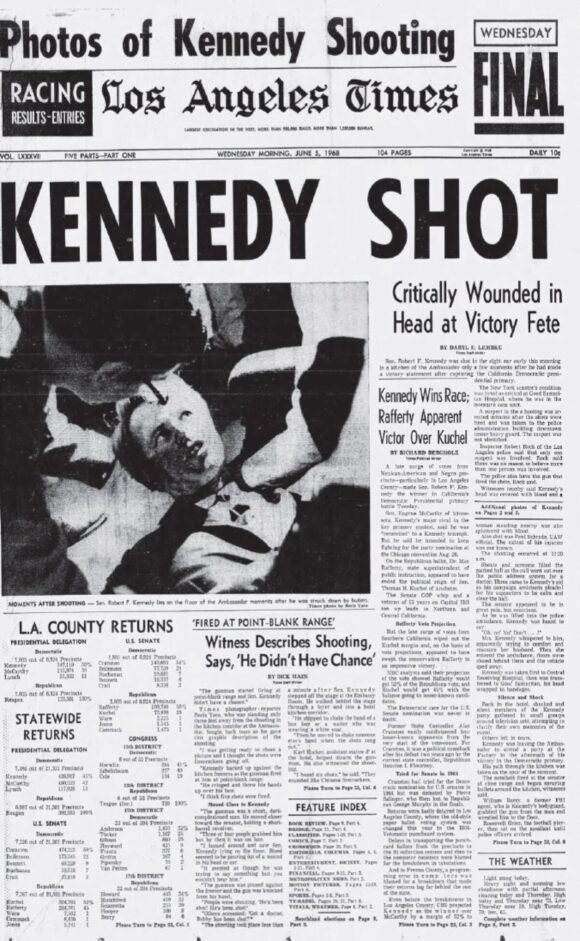
So, let’s set the scene: America in 1968 was a nation in turmoil and this week the threadbare fabric that held the country together suffered another severe fissure: Robert F. Kennedy — who was looking to succeed President Lyndon Johnson — on June 4 won the California Democratic presidential primary and, moments after thanking his supporters shortly past midnight June 5, was shot while walking through a corridor at the Ambassador Hotel in Los Angeles. Five other people were wounded and police arrested Sirhan Sirhan, a Palestinian Jordanian citizen living in the United States, for the shooting. Kennedy, who never regained consciousness, died in the early morning hours of June 6. Sirhan Sirhan is still alive in prison, age 79.
RFK’s assassination, following his brother President John F. Kennedy’s murder in 1963 and the Rev. Martin Luther King Jr.’s slaying in April 1968, was a watershed moment in American history and a defining event of the 1960s in general and ’68 in particular. On June 8, the same day RFK was buried in Arlington National Cemetery next to his brother’s grave, King assassin James Earl Ray was arrested at Heathrow Airport in London after 65 days on the run.
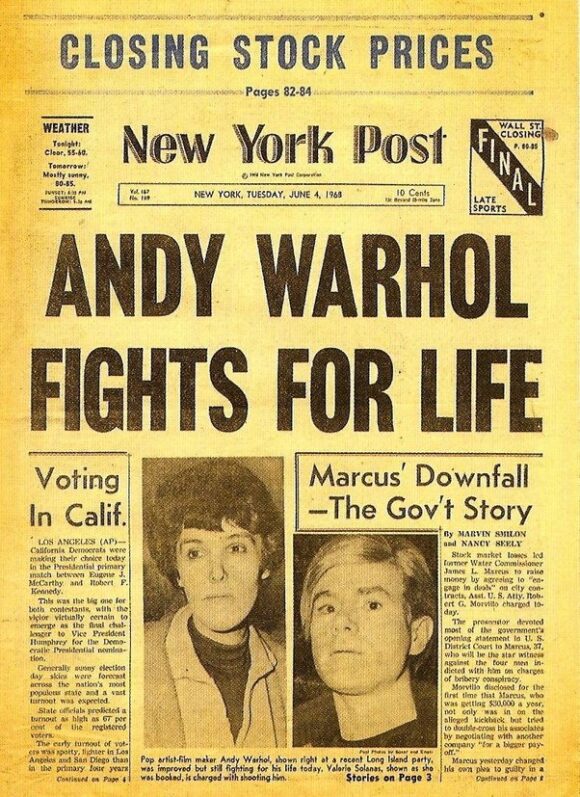
The monumental nature of RFK’s assassination dwarfed one of the strangest episodes of the era: On June 3, Valerie Solanas, a self-described radical feminist who had founded the Society for Cutting Up Men — aka SCUM — shot pop artist Andy Warhol several times at The Factory in New York City. Warhol would recover but the shooting haunted him for the rest of his life. Solanas served only a three-year sentence and after her 1971 release began stalking Warhol and others by telephone. She was arrested in November of that year and was institutionalized several more times. Solanas died in 1988 at 52; Warhol, at 58, died a year earlier.
Amid all this, the Vietnam War was at its peak, with U.S. troop levels at their highest and May 1968 the deadliest month for American forces throughout the entire conflict.
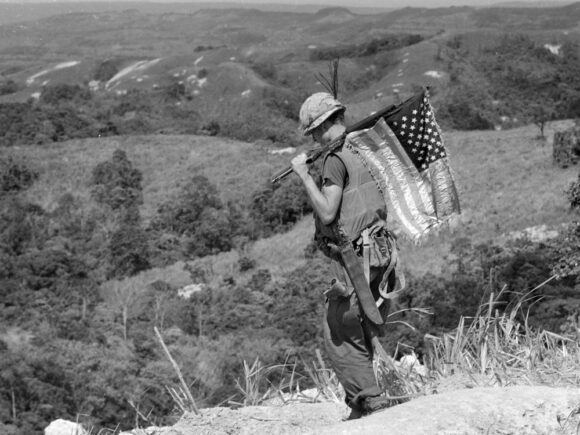
It was an ugly, painful time but also one of earth-shattering artistic vision. In theaters was what many consider to be the greatest film of all time — Stanley Kubrick’s masterpiece 2001: A Space Odyssey, an utterly stunning achievement. To this day, I avoid details about how Kubrick performed this cinematic triumph because I do not want the illusion ruined. It’s much more powerful not to know and to experience the movie as presented. The practical effects in many respects still exceed modern CGI capabilities, making it much more an immersive experience than most of today’s blockbusters.
At the other end of the tonal spectrum, The Graduate — a late 1967 movie that distilled the alienation and disaffection felt by America’s youth culture — was the No. 1 film at the box office. Directed by Mike Nichols, who won an Oscar for his efforts, the movie — also starring the breathtaking Katharine Ross and spectacularly sexy Anne Bancroft as Mrs. Robinson — made lead Dustin Hoffman a huge star. It was his first movie role.
It was rerun season, but the most popular TV shows included The Andy Griffith Show, The Lucy Show, Gomer Pyle USMC and Gunsmoke. Ratings-challenged Star Trek, thanks to a massive letter-writing campaign, was saved from the ax in March. What would be the Original Series’ final season would begin in September 1968.
The No. 1 song on the Billboard 100 was Simon & Garfunkel’s seminal Mrs. Robinson, from The Graduate soundtrack — a song that I’d argue has well exceeded the popularity of the film itself. The duo also dominated the album charts, with no less than three LPs in the top five slots — Bookends at No. 1, The Graduate soundtrack (also including instrumental music by Dave Grusin) at No. 2 and Parsely, Sage, Rosemary and Thyme at No. 5.
Meanwhile, one of my fave Herb Alpert tunes — the lovely This Guy’s in Love With You, written by Burt Bacharach and Hal David — was at No. 3 on the singles chart.
Other charting albums included the Monkees’ The Birds, the Bees and the Monkees (No. 3), Cream’s Disraeli Gears (No. 11) and Jimi Hendrix’s epochal Are You Experienced? (No. 13).
Putting all of that aside, however, one of the best, most pivotal songs in rock history had just been released in the U.S. on June 1: Jumpin’ Jack Flash, by the Rolling Stones. Not only is it one of the tightest, most powerful rockers ever, it marked an explosive new era for the band, which eschewed its recent, weak-hearted attempts at psychedelia and cultivated a new, grittier sound soaked in American blues and country music. This is the direction that would lead to them being credibly proclaimed (first by the band’s stage manager) the Greatest Rock and Roll Band in the World. Mick Jagger and Keith Richards were embarking on their most fertile songwriting period and over the next four years the band would achieve its creative zenith.
Dig the original, wonderfully batshit crazy video:
Oh, and the Beatles? The Beatles, having recently returned from India, didn’t have a big hit at the moment, but the band had just begun recording what would become The White Album, released in November 1968 — precisely two weeks before the Stones’ Beggars Banquet.
—
Dan Greenfield, editor, 13th Dimension
Batman #204, DC. Oh, yeah! This is a comic-book column! So let’s talk about the comics! Interesting bit of trivia on this one: It’s the first issue of the Batman title that wasn’t signed by Bob Kane. Instead, writer Frank Robbins, penciller Irv Novick and inker Joe Giella received full credit. At the same time, DC had begun to transition the Masked Manhunter away from camp-infused, fanciful stories and toward more grounded material. It was an evolution but Robbins and Novick were very much a part of it. (Neal Adams is credited with starting the movement over in The Brave and the Bold.)
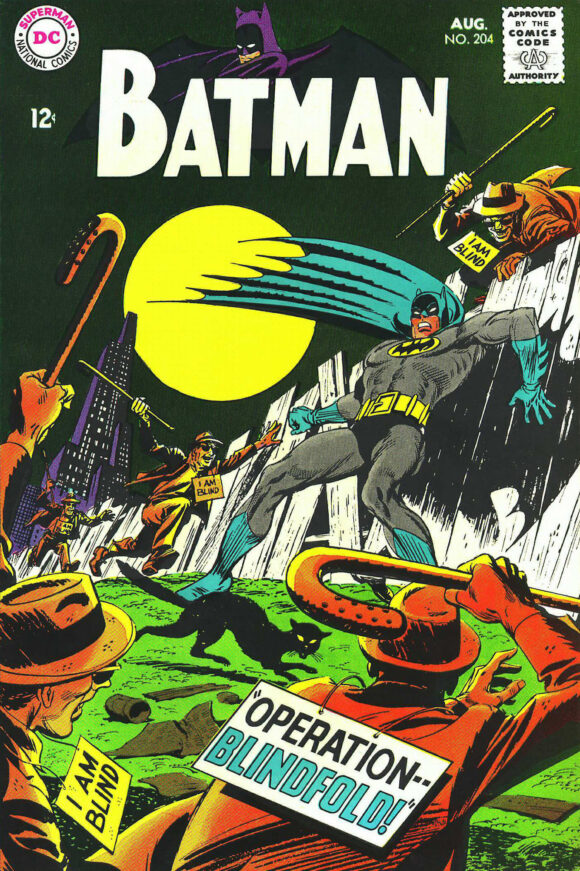
Scott adds: Another striking cover from Irv Novick.
—
The Atom #38, DC. Wanna enjoy some easy breezy Silver Age comics? Pick up some random issues of The Atom. The Tiny Titan always made for a good read, but sadly, sales couldn’t keep up and the next issue, DC merged this comic with Hawkman.
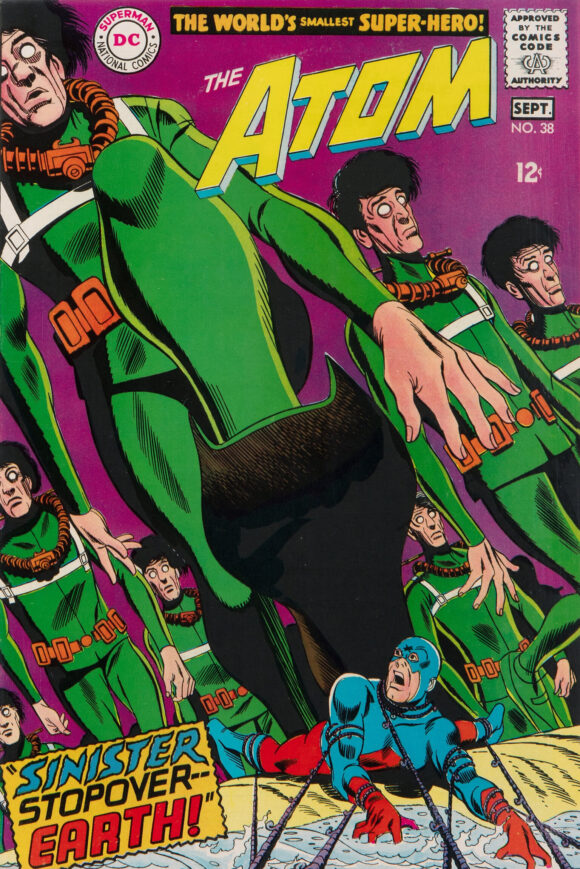
—
Doctor Strange #172, Marvel. Roy Thomas, Gene Colan, Tom Palmer, “I, Dormammu.” ‘Nuff said.
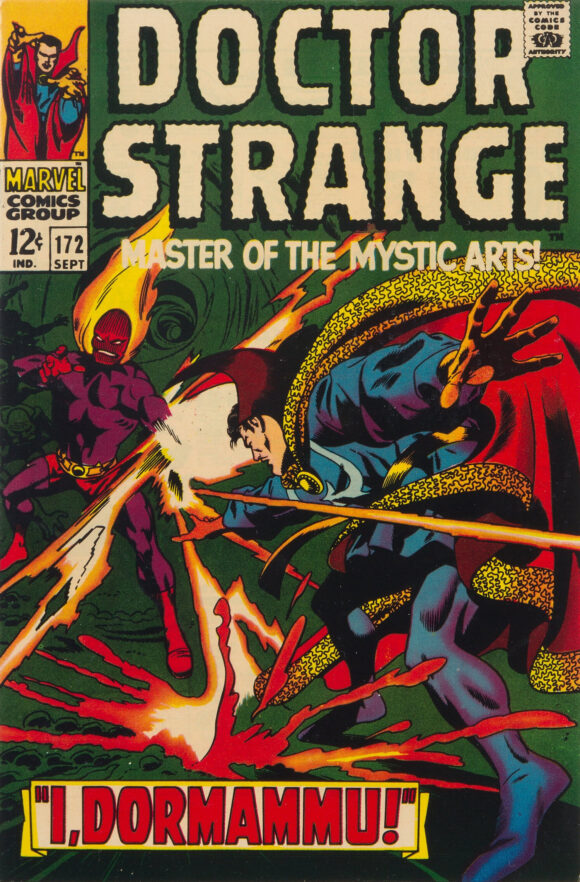
—
Sub-Mariner #5, Marvel. The first appearance of Tiger Shark! How much you care about that probably depends on how much of a Marvelhead you are.
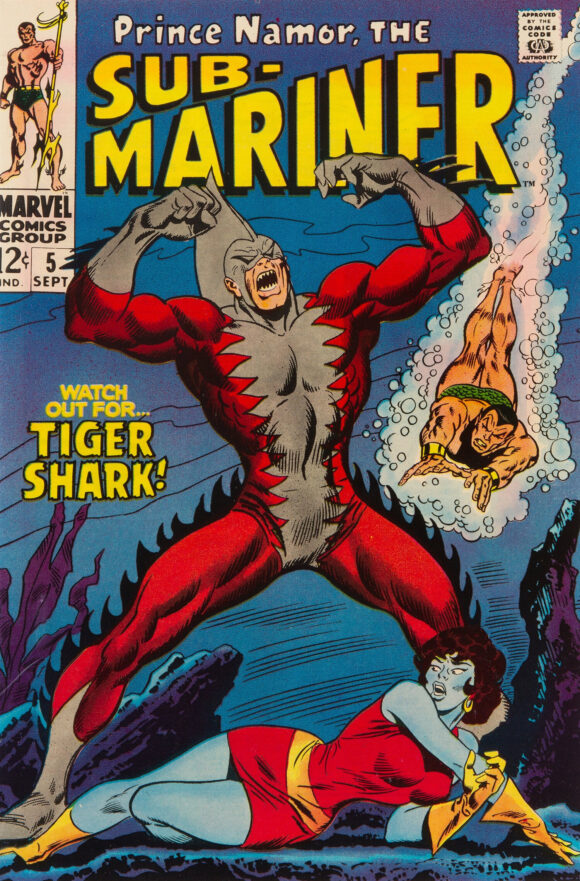
—
King Kong #1, Gold Key. In the ’70s, I got the tabloid reprint that was released to capitalize on the 1976 Dino De Laurentiis King Kong spectacle. I read it cover to cover, over and over, even though it was a (somewhat) different story. I also had no idea that it was a reprint. Either way, really fun comics by writer Gary Poole and artists Giovanni Ticci and Alberto Giolitti, with a groovy cover by the great George Wilson.
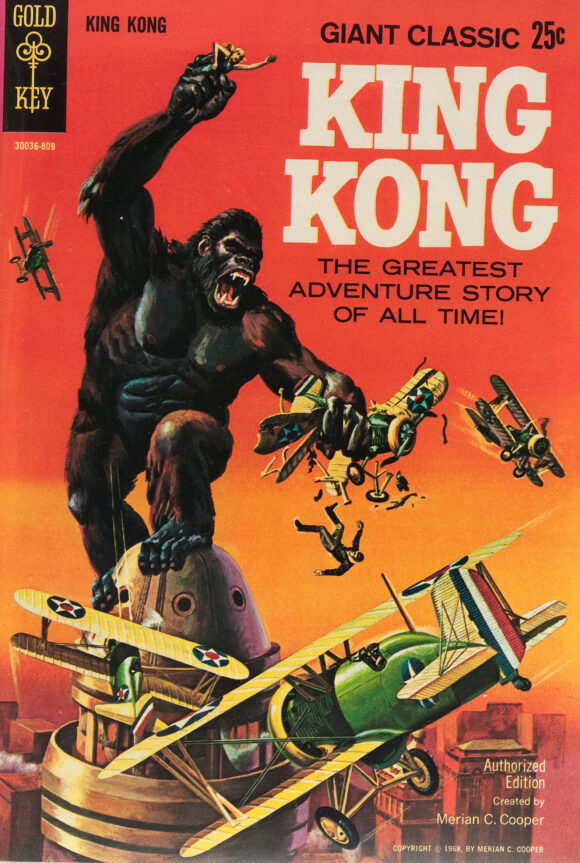
—
Our Army at War #196, DC. One of the most memorable Sgt. Rock covers and stories. Joe Kubert did it all and it’s reasonable to assume that, given his anti-war predilections, the writer/artist was making direct commentary on the raging Vietnam War.
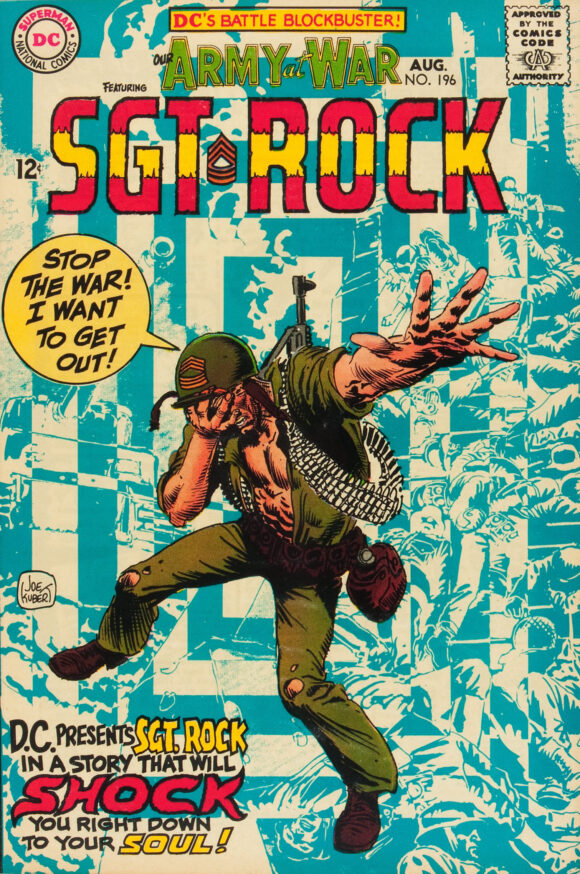
—
Secret Six #3, DC. DC in 1968 tried a bunch of ideas, including this cult-fave Mission: Impossible-style series written by E. Nelson Bridwell. The series didn’t last long but is still remembered fondly to this day.

—
The Monkees #14, Dell. Despite an album among the Billboard leaders, Monkeemania was waning: The show had been cancelled in March and the band was embarking on a film — Head — designed to blow up the public’s perception of the Prefab Four. The group finished shooting the film — co-written by Bob Rafelson and Jack Nicholson and directed by Rafelson — in May. It would flop in the fall. The comic, meanwhile, lasted only three more issues.
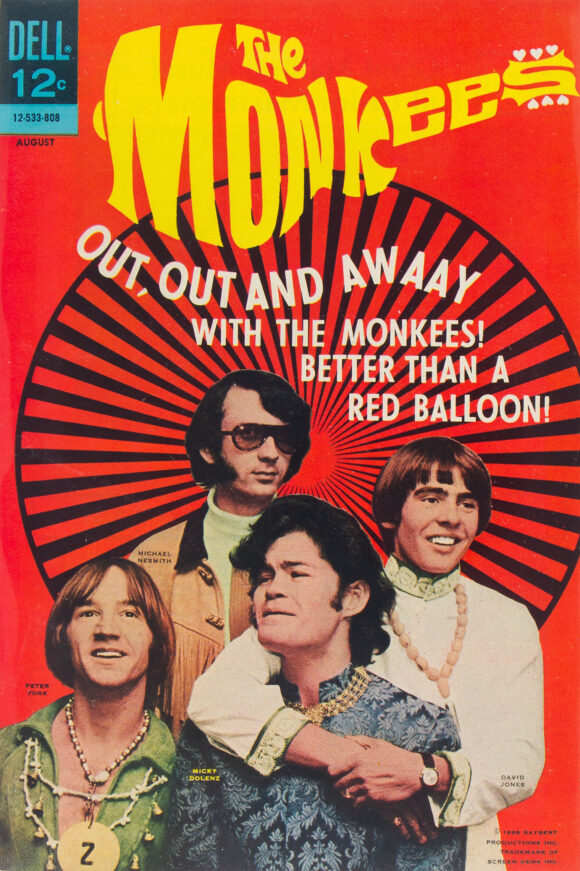
ImgIsCanon:UserID=joseh:Machine=2UA3390QWS:APP=ISAS_Acquire:Version=1.5.1.4
—
Archie #184, Archie. Wait, Archie is complaining?
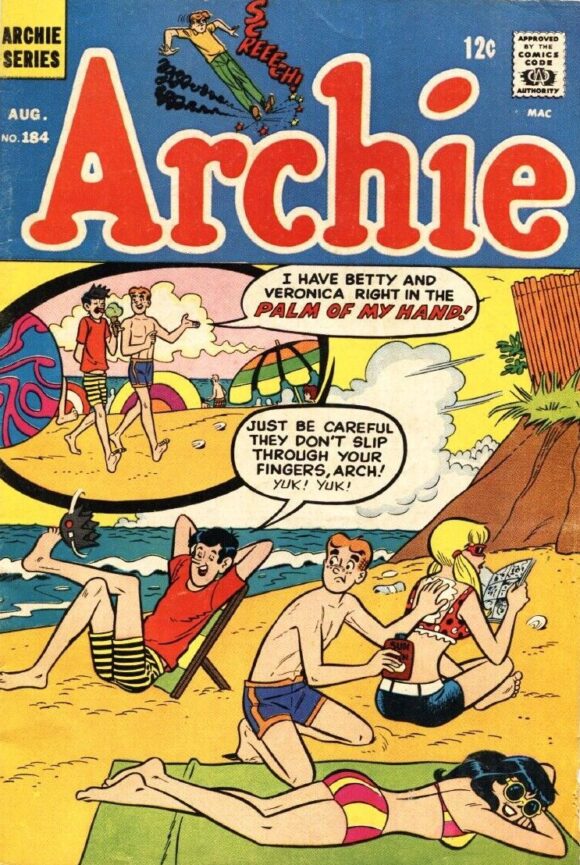
—
Scott Tipton, contributor-at-large, 13th Dimension
Captain America #105, Marvel. You don’t see Cap using this “shield-rope-slide” move very often. Probably because it looks like it wouldn’t work at all.
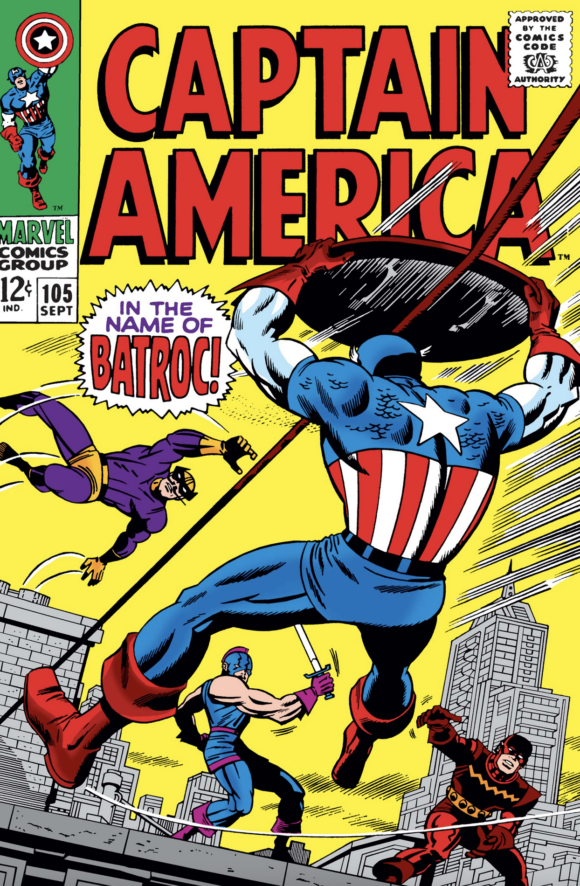
—
Thor #155, Marvel. Starring Thor’s arm! Seriously, what an odd cover.
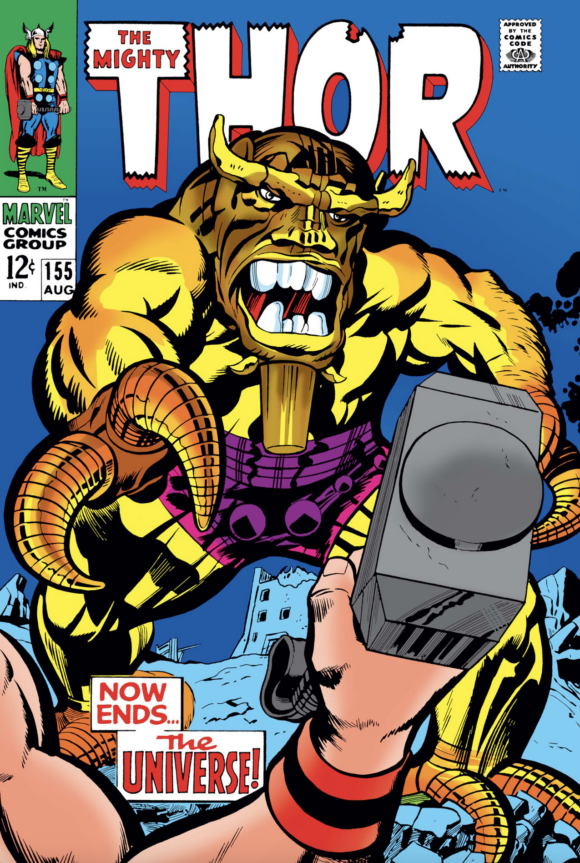
—
Nick Fury, Agent of SHIELD #4, Marvel. The most iconic Nick Fury image ever.
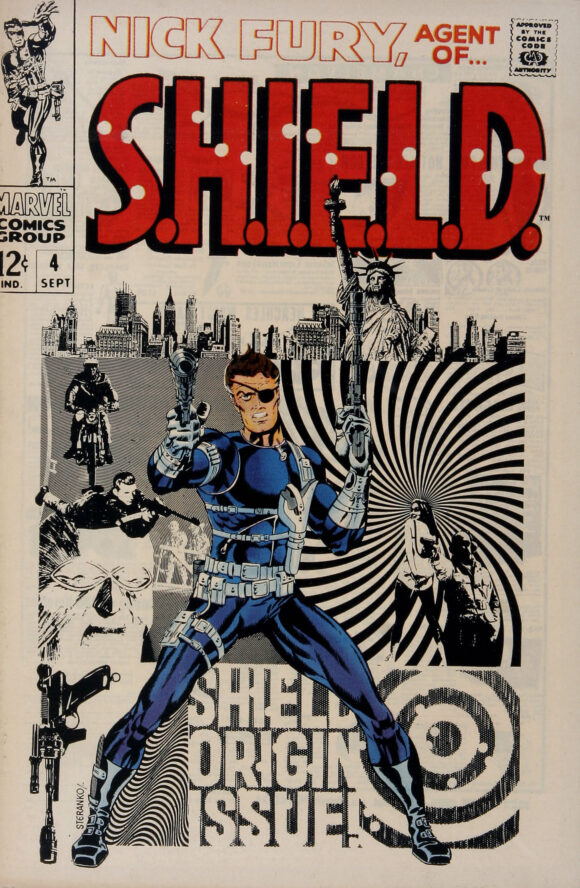
—
MORE
— RETRO HOT PICKS! On Sale The Week of May 31 — in 1988! Click here.
— RETRO HOT PICKS! On Sale The Week of May 24 — in 1956! Click here.
—
Primary sources: Mike’s Amazing World of Comics, the Grand Comics Database.

June 7, 2023
I’ve always suspected Carmine Infantino laid out that cover to Batman #204. The extreme angle, Batman’s stiff cape blowing to one side, and the fence leading to the cityscape scream Infantino to me. Either way, Novick illustrated it wonderfully.
I remember having a small Tigershark cardboard cut-out that came from a Marvel game or maybe one of the “World of Marvel” playsets as a kid. It mistakenly made me think he was an A-list Marvel baddie. He still looks pretty cool!
June 7, 2023
WOW.WOW.and WOW to all of happenings at that period in time ! Music, movies, comics and the crazy world.
June 7, 2023
Crazy, right?
June 9, 2023
Joe Kubert’s not saying, but I believe that issue of Our Army at War (#196, reprinted in OAaW 269) featured the first Silver Age appearance of The Phantom Stranger since the end of his first run in the earlier Fifties. No, he’s not dressed in his customary fedora and trench-coat/cloak, but like his other “pre-historic” appearances (Madame Xanadu), he appears dressed in the mode of the day. In Rock’s case, as an anonymous GI without sign of rank, taking no direct part in the story, but offering sage counsel in times of moral crisis. That’s the Stranger’s schtick, and Joe clearly handled it so.